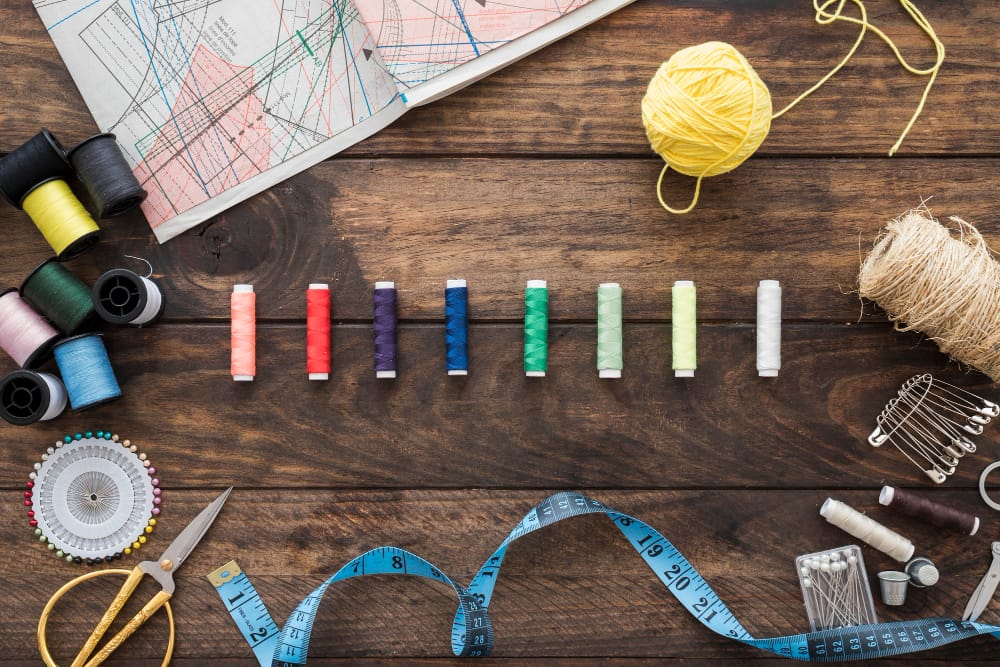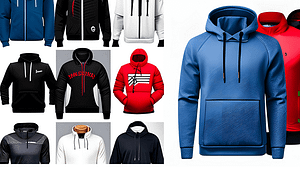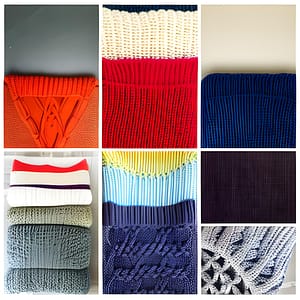Gilets Manufacturers
Manufacturing Gilets: Exploring Fabric and Trim Choices
When it comes to manufacturing gilets, the choices of fabric and trim play a crucial role in determining the quality and appeal of the final product. From traditional to modern designs, gilets have been a staple in many wardrobes, offering both style and functionality. In this blog post, we will delve into the world of manufacturing gilets, exploring the various fabric and trim choices that are used to create these versatile pieces of clothing.
The Global Landscape of Gilet Manufacturing
Gilets, known for their versatility and stylish appeal, are crafted across the globe, with each country contributing its own unique flair to the manufacturing process. Renowned for their quality and fashion-forward designs, Italy, France, and the United Kingdom stand at the forefront of the gilet production industry. These nations have carved a niche in the market through decades of refining their craft, melding traditional techniques with modern innovations to produce gilets that meet a variety of fashion needs and climatic conditions.

Italy is celebrated for its luxury textiles and artisanal craftsmanship, making it a go-to destination for premium quality gilets. Italian manufacturers pay meticulous attention to detail, selecting only the finest fabrics and trims to create pieces that exude elegance and durability. France, on the other hand, brings its iconic sense of style and sophistication to gilet manufacturing. French-produced gilets often feature avant-garde designs and high-fashion elements, making them a favourite among fashion connoisseurs. Meanwhile, the United Kingdom’s contribution to the gilet market is marked by its rich heritage in outdoor and country wear. British-made gilets are prized for their practicality, robust construction, and classic aesthetics, suitable for both rural escapades and urban living.
In addition to these well-established centres of gilet production, emerging markets and manufacturers around the world are also making their mark, driven by innovations in fabric technology and sustainable practices. These new players are expanding the global landscape of gilet manufacturing, introducing fresh perspectives and environmentally conscious options to the market. As the industry continues to globalise, the exchange of ideas and techniques among countries enriches the diversity and quality of gilets available to consumers, promising a future where tradition and innovation coexist seamlessly in the creation of these timeless garments.

Understanding the Fabric Essentials in Gilet Production
In the world of gilet production, the choice of fabric is pivotal, influencing not just the aesthetic appeal but also the functionality of the garment. Three primary materials are favoured in the creation of gilets, each serving a distinct purpose and catering to varying consumer needs.
Nylon, renowned for its lightweight and water-resistant properties, is often the go-to fabric for gilets designed with the outdoors in mind. This material offers an exceptional balance of breathability and protection against the elements, making it a preferred choice for enthusiasts of outdoor activities who seek both comfort and durability in their attire.
Polyester, on the other hand, stands out for its strength and resilience, alongside the ease with which it can be maintained. Gilets crafted from polyester are not only long-lasting but also hold their shape well, resisting wrinkles and shrinking. This makes them particularly appealing for those looking for low-maintenance outerwear that can withstand the rigours of daily use without compromising on style.
Cotton gilets introduce a dimension of comfort and breathability unparalleled by synthetic counterparts. The natural fibres offer a soft, gentle touch against the skin, making these gilets a favourite for everyday wear. The inherent versatility of cotton allows for a wide range of textures and weights, providing ample opportunity for designers to experiment with styles that range from lightweight summer vests to more substantial, quilted versions for cooler weather.
Each of these materials brings its own set of advantages to the table, allowing manufacturers to tailor their gilet offerings to meet specific market demands and consumer preferences. The thoughtful selection of fabrics is a testament to the craftsmanship and innovation that underpin the gilet manufacturing process, ensuring that every piece not only looks the part but also performs exceptionally well in its intended environment.
The Role of Trims in Gilet Manufacturing
In the intricate process of gilet manufacturing, trims are not merely functional elements; they are integral components that infuse character and distinction into the final piece. The selection and application of trims such as zips, buttons, drawstrings, and pockets are pivotal in shaping the aesthetic and practicality of a gilet. Zips, for example, offer not just ease of use but also contribute to a modern and streamlined look, allowing for versatility in styling and comfort. Buttons, ranging from the discreet to statement pieces, add a touch of classic elegance or bold style, depending on their design and placement.

Drawstrings, although less commonly used, provide an adjustable fit, catering to the wearer’s comfort and enhancing the silhouette of the gilet. They introduce an element of casual sportiness or refined tailoring, depending on the material and finish used. Pockets, beyond their obvious utility, play a significant role in the design of a gilet. Their size, shape, and positioning can dramatically alter the garment’s functionality and style, offering opportunities for subtle branding or distinctive design features that set a gilet apart from its counterparts.
The innovation in trims extends to their materials and manufacturing techniques, reflecting a broader industry trend towards sustainability and technological advancement. Magnetic closures offer an alternative to traditional fastenings, providing ease of use for all ages and abilities, whilst eco-conscious materials for buttons and zips align with the growing demand for sustainable fashion. The development of reflective trims enhances the utility of gilets intended for outdoor use, marrying safety with style in an increasingly health-conscious market.
Thus, the role of trims in the manufacturing of gilets is multifaceted, bridging functionality with fashion. Their thoughtful selection and application underscore the craftsmanship behind each garment, offering a palette for creativity and innovation in the ever-evolving landscape of apparel design.

Innovative Fabrics and Trims in Modern Gilet Production
In the realm of modern gilet production, the search for innovative materials and enhancements is unceasing, driven by a commitment to sustainability and superior functionality. The industry is witnessing a surge in the adoption of recycled fibres, with manufacturers turning to repurposed polyester and nylon to curtail the environmental toll of textile production. These eco-conscious choices offer a dual advantage: they significantly reduce waste and the use of virgin resources, whilst maintaining the high performance and aesthetic appeal expected of premium gilets.
Another frontier of innovation lies in the integration of smart trims that elevate the practicality and appeal of gilets. Magnetic closures stand out for their ease of use, appealing to a broad demographic by simplifying the fastening process without compromising style. The introduction of seamless, hidden pockets reflects a growing trend towards sleek, utilitarian designs. These pockets not only enhance the silhouette of the gilet but also cater to the modern consumer’s need for secure, inconspicuous storage solutions.
Manufacturers are also embracing advanced fabric treatments to imbue gilets with additional functionalities. Water-repellent and UV-protective coatings are increasingly common, offering wearers extra protection from the elements. Such treatments extend the versatility of gilets, making them suitable for a wider range of activities and weather conditions.
The exploration of bio-based materials and dyes constitutes another exciting development, aligning with the industry-wide pivot towards greener production methods. These naturally derived alternatives promise to further lessen the environmental impact of gilet manufacturing, paving the way for a future where fashion and eco-responsibility go hand in hand. Through these continuous innovations in fabrics and trims, the gilet remains at the forefront of both style and sustainability, illustrating the industry’s capacity for renewal and adaptation.
The Future of Gilet Manufacturing
As we look towards the horizon of gilet manufacturing, it’s evident that the sector is on the cusp of transformative change. Innovations in design and technology are set to redefine the way gilets are produced and perceived. The burgeoning trend towards customisation is a testament to the industry’s responsiveness to consumer demands for garments that not only fit their lifestyle but also echo their personal aesthetics. This shift is facilitated by advancements in digital fabrication and 3D printing technologies, enabling manufacturers to offer bespoke design options with reduced lead times and waste.
The momentum towards sustainable fashion continues to gather pace, compelling manufacturers to delve deeper into the realm of eco-friendly practices. There is a concerted effort to source materials that are not only less detrimental to the environment but also uphold the standards of durability and performance that consumers expect. The adoption of circular production models, where the lifecycle of every gilet is considered from design through to disposal, highlights a holistic approach to sustainability that transcends the use of recycled fabrics.
Emerging technologies such as AI and IoT are poised to play pivotal roles in enhancing both the manufacturing process and the functionality of gilets. Smart textiles, capable of adapting to the wearer’s body temperature or providing health monitoring capabilities, are on the development horizon, promising to introduce a new layer of interaction between the garment and its wearer.
In this dynamic landscape, the future of gilet manufacturing is shaped by a commitment to innovation, sustainability, and a deeper understanding of consumer desires. As we move forward, the industry is well-positioned to navigate these changes, crafting gilets that are not only fashionable and functional but also kinder to our planet.
FAQ’s
Related Latest Blogs

From Classic to Quirky: A Guide to Different Types of Hoodies

Wrap Yourself in Comfort: A Stylish Guide to the Different Types of Sweaters
